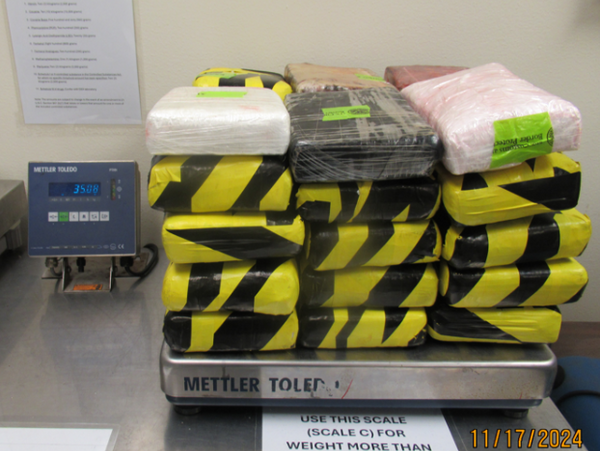
Ever since I started training my dad, I’ve noticed three major improvements in his fitness: Better posture, balance and functional strength. To achieve this, we work on strengthening his glutes, hips and hamstrings every single week — three muscle groups that play a key role in injury prevention, lower-back protection and posture.
Alongside many compound exercises I’ve taught him, there are three strengthening exercises I use specifically to build strong glutes and test his balance.
As we age, muscle mass loss — also known as sarcopenia — accelerates, bone density decreases and trips and falls can become more common. It's not guaranteed, though: resistance training at all ages is crucial for maintaining muscle and bone mass, keeping you active, strong and nimble at any age.
Curious? Here are the three moves I swear by, plus how to do them and the benefits of adding them to your strength routine.
What are the three muscle-strengthening exercises?
Even if you're not older, give these a try.
Dumbbell step-ups with an eccentric lower
Don’t let the name put you off; step-ups are easy to implement with minimal equipment, and you can adjust the exercise to make it easier or harder with minimal effort.
Step-ups are as functional an exercise as can be, mimicking the action of climbing while strengthening your legs, core and glutes and boosting power and stability. After all, you are stepping onto a raised surface using one leg.
This variation will improve your mind-muscle connection and work muscles for longer. Eccentric contraction occurs when the muscle lengthens under tension; in this instance, eccentric muscle contraction occurs as you step down, while concentric contraction (the muscle shortening) occurs as you step upward and drive through your leg with force and power.
Existing bodies of research continually show that eccentric-focused exercises are very effective for building muscle and improving stability. For that reason, this step-up variation will include lowering your leg to the ground slowly for the count of 4 to 5 seconds as you step back down.
Follow the video above to see how you can do step-ups properly, then either increase the height of the box, bench, or similar, to make the exercise more challenging. On the flipside, decrease the height if you find it too difficult to step up. When you feel comfortable, hold a dumbbell in each hand; progressively increase the weights as you get stronger.
- Stand close to a box with feet hip-width apart and the box in front of you
- Step your left foot fully onto the box and engage your core
- Drive through your left leg and push your body upward to stand on the box with both feet
- Next, place your weight into your left leg and slowly lower your right leg to the floor behind you, trailing the leg close to the box until your right foot reaches the floor — aim for 4-5 seconds
- Step your left foot down
- Switch sides. Aim for 3-4 sets of 8 reps per side.
To increase the challenge further, front-rack the weights to your shoulders and drive your elbows high. Shelving the weights at your shoulders like this challenges torso stability, increasing core and shoulder activation as you try to manage the weights and stay upright.
One-leg dumbbell hip thrusts with pause

I want this move to be all about the butt squeeze and control, so I always add a pause at the top of the hip thrust and ask my dad to drive his hips high while aiming for a “squeezy butt” for the count of two seconds.
"The Glute Guy" Bret Contreras recently posted a video on his socials, saying stretching your hip flexors (to improve hip extension) for glute growth isn’t always necessary to build gluteal muscle. Yet it certainly helps, so if you find your hips are tight or sore when you thrust, I recommend hip stretches several times per week to help loosen things up.
You can practice the hip thrust with both feet (above), but to improve stability, balance and isolate one side of the body at a time, try it one-legged. My dad struggles to activate his hamstrings, so I also ask him to step his feet further away from his butt or lift his toes and balance on the heels to help fire them up, which you can also do.
- Start seated with your back against a box or bench. Your shoulder blades should be aligned with the top of the box
- Place your feet hip-width apart, knees bent. The distance from your butt to your heels is personal, so play around with it
- Place a dumbbell across your hips and hold it with both hands
- Engage your core
- Press through your left heel, then lift and extend your right leg away from the ground in front of you
- Drive your hips high toward the ceiling, squeezing your left butt cheek as you extend your hips
- Aim for a straight line from your shoulders to your knee while keeping your gaze and chest forward. Slightly tuck your ribcage under
- Pause at the top, then slowly lower your hips and butt to the ground with control
- Switch sides. Aim for 3-4 sets of 8 reps per leg.
Butterfly glute bridges
I love the butterfly stance — soles of the feet together and knees wide — because it stretches the groin and fires up the outer glutes, which are called the gluteus medius.
I see a lot of people forcing their knees open when performing the butterfly glute bridge, but instead, try to let gravity do its thing. If you have tight hips and groin muscles, stretching this area can help, but you should also see improvements the more you practice this exercise.
Remember not to hyperextend your back by excessively thrusting your hips — a straight line from shoulder to kneecap is perfectly fine. I would also roll out a yoga mat and perform the exercise on my back.
- Lie on your back with your knees bent and feet hip-width apart
- Open your knees and press the soles of your feet together
- Tuck your pelvis toward you to flatten your lower back to the mat
- Rest your hands by your sides and engage your core
- Press your hips upward while keeping your chin tucked toward your chest and your ribcage tucked toward you
- Pause at the top and squeeze your glutes, then slowly lower your hips to the floor, starting at the top of your spine and finishing with your butt.

My dad has developed some crazy strong glutes over the years, and I credit these exercises with getting him there. However, this means I have to work a lot harder to find a challenge for him with every move. If you’re the same, try to lift your hips for the count of five, then lower for the same.
I don’t recommend weights for this glute bridge variation as it’s all about slow, controlled tension, but you could wrap a resistance band just above your knees and practice pressing your knees outward against the band. You can add some pulses at the top of this exercise to get a little extra pump from your glutes before you lower your hips again.
Follow Tom's Guide on Google News to get our up-to-date news, how-tos, and reviews in your feeds. Make sure to click the Follow button.







